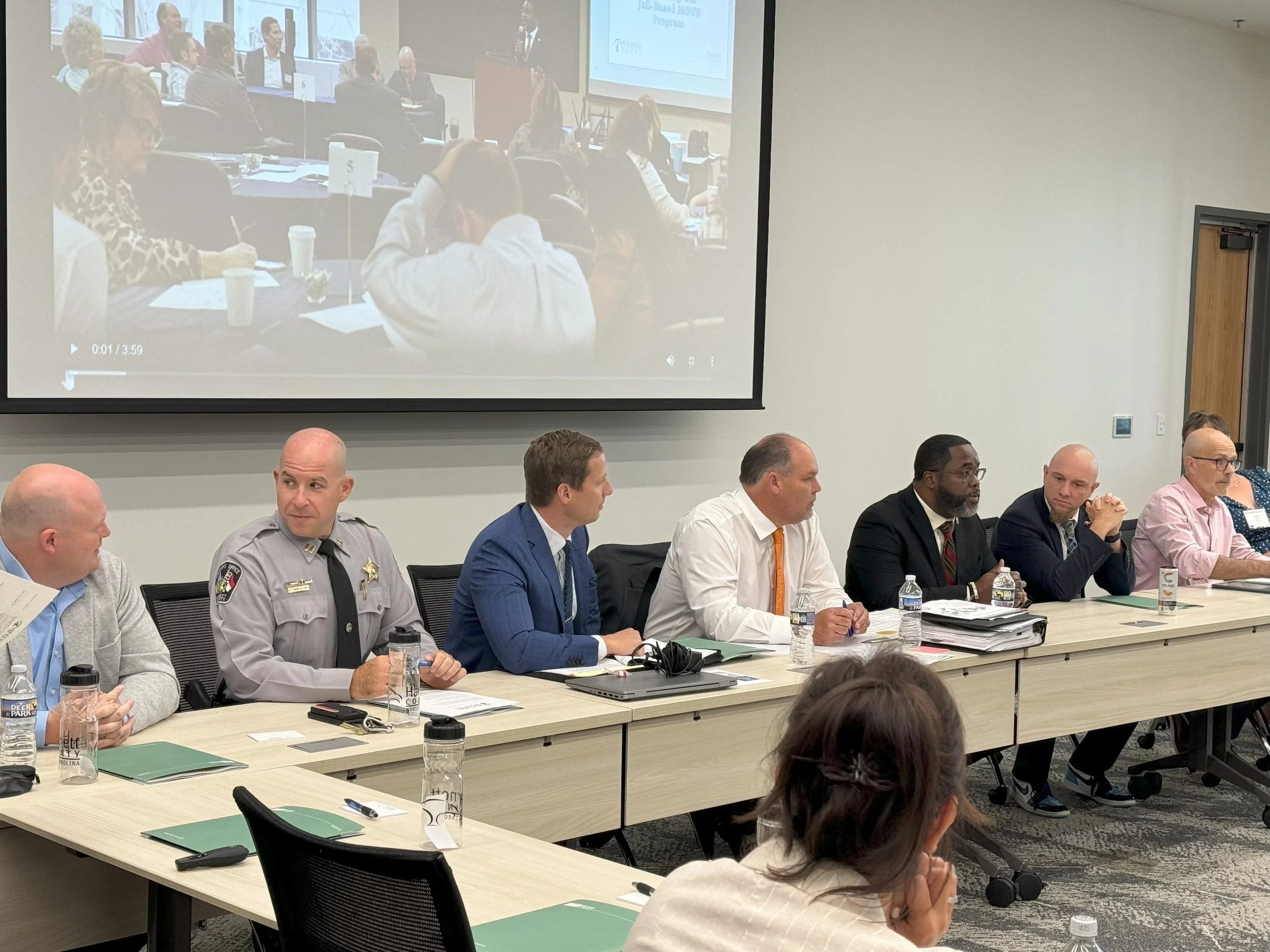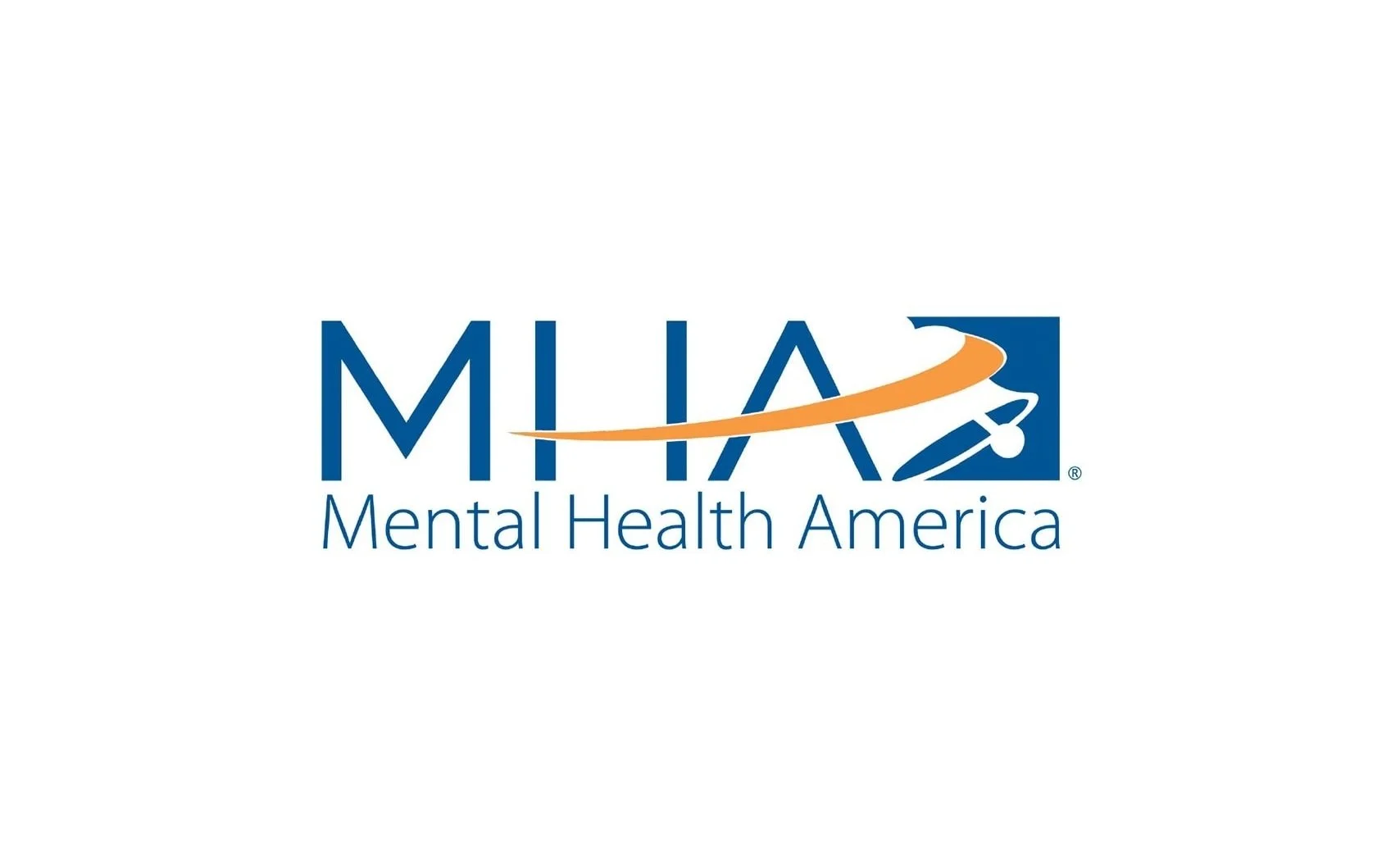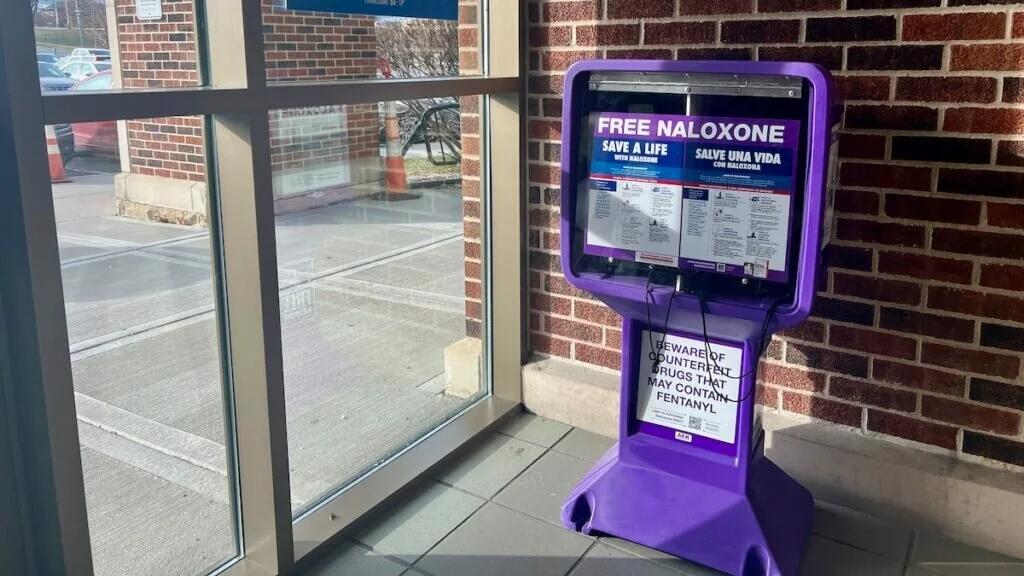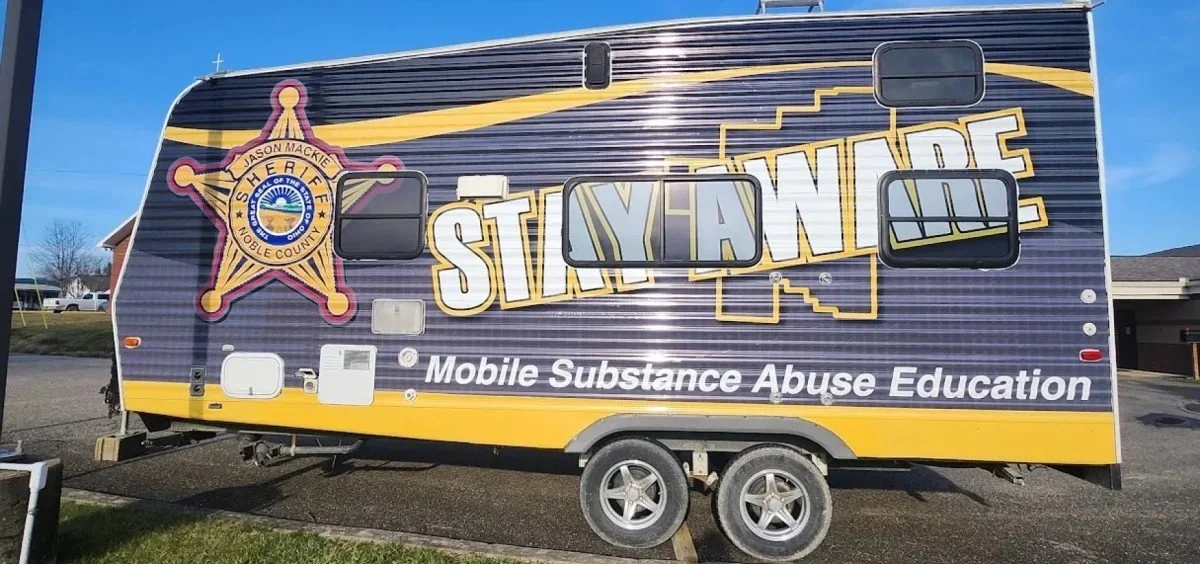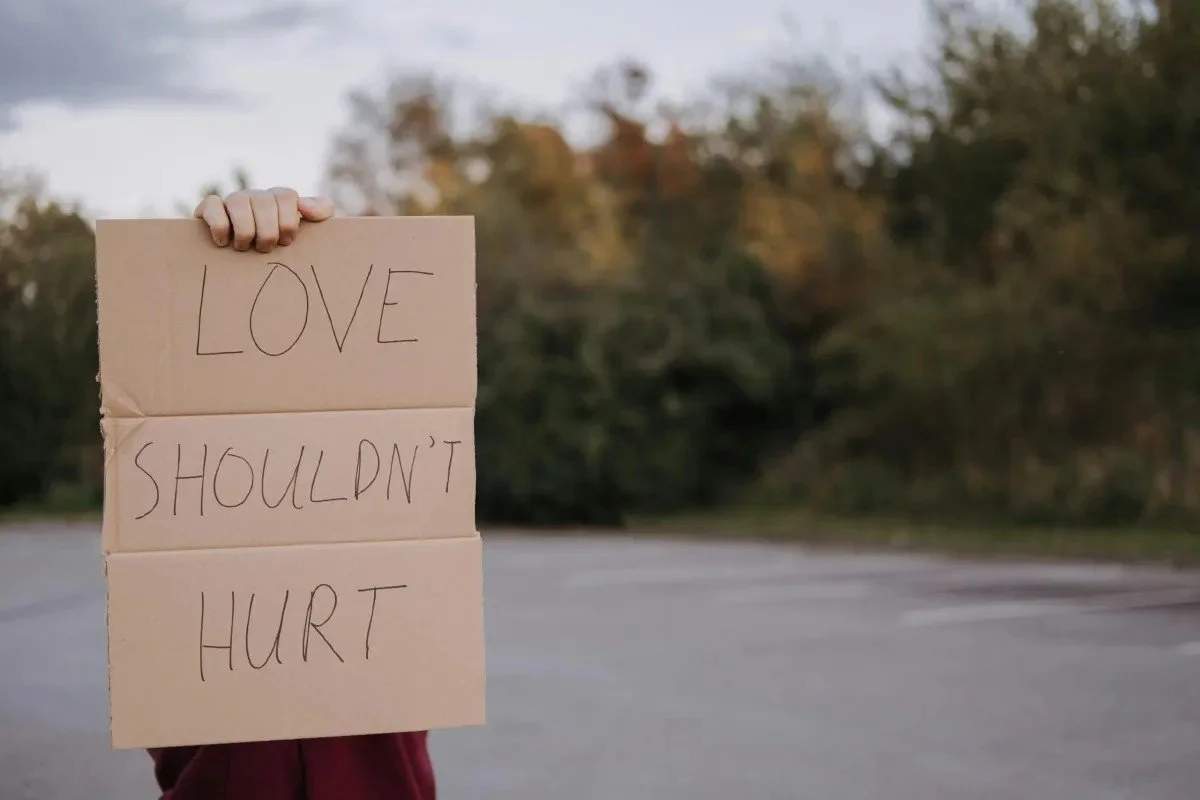Resources for Rural Communities
Use the filters below to search by resource topic, type, and audience.
An Examination of Access and Barriers to Co-Occurring Disorders Treatment in a Rural Jail
Rural jails struggle to screen and treat individuals with mental health and substance use disorders, with only 3% of eligible arrests leading to treatment. The most common path to care is post-arrest screening, especially for those with prior arrests. However, only 38.4% of referrals result in treatment, and males are less likely than females to participate, pointing to major gaps in access, outreach, and support.
Evaluation of a primary care-based Medication for Opioid Use Disorder (MOUD) program in a fully-integrated federally qualified health center
Clackamas Health Centers (CHC), a Federally Qualified Health Center in Oregon, has offered medication for opioid use disorders (MOUD) for over a decade. CHC also provides MOUD to individuals involved with the criminal justice system. This evaluation examines how CHC's MOUD program implements low-barrier care.
Reaching Rural: Building Trust and Expanding Access for Mental Health
This webinar explores challenges and solutions related to mental health outreach in rural communities. It features insights from experts who share their experiences addressing stigma, building trust, and expanding access to mental health care in rural areas. The session highlights the importance of culturally sensitive approaches, trusted community messengers, and sustainable programs tailored to rural populations.
How a New Program is Sparking Change in Ohio Jails
A couple of years ago, the Sandusky County Jail was the first in Ohio to launch a program called IGNITE, which stands for Inmate Growth Naturally and Intentionally through Education. IGNITE started in 2020 at a county jail in Flint, Michigan. The sheriff there wanted to shift the jail’s culture and reduce the rate of people returning to jail. So they started offering courses to teach skills like financial literacy and parenting. Since then, the National Sheriff’s Association has adopted the program and has spread to more than 25 jails nationwide.
Range Podcast: Opioid Overdose in Rural WA & ID
This episode explores the landscape of opioid overdose in the rural areas of North Idaho and Northwest Washington, and highlights the tragic story of Jasmine Martin, a 23-year-old who died from an overdose in 2024 while trying to get sober. The conversation explores the availability of recovery resources, stigmas surrounding addiction, and the complexities of fentanyl use in small communities. (Jasmine’s story, min. 11:18)
A New Treatment Study is Showing Promise for Rural Mainers with Opioid Use Disorder
With opioid addiction continuing to affect thousands of residents in Maine each year, Seaport Community Health Center (SCHC) in Belfast, a rural area of Maine, is initiating a trial for a new treatment that may significantly enhance access and consistency for individuals struggling with opioid use disorder. SCHC is among several sites involved in a nationwide study assessing the efficacy of Brixadi, an injectable medication designed to treat opioid addiction. Unlike traditional medications such as Suboxone, which require daily administration under the tongue, Brixadi is administered monthly.
WSU Researchers Investigate Rising Rural Jail Rates in Washington
This article discusses research conducted by a team at Washington State University on incarceration rates in rural county jails. The team examined data from six rural counties over six years and found that a significant number of individuals held in jails were there due to missed court appointments or violations of other legal system rules, rather than crimes against people or property. The study also identifies a lack of resources, such as adequate defense attorneys and accessible case information, as factors contributing to the issue.
The Evolving Role of Drug Courts in Combating Addiction and Recidivism
In rural areas like Warrick County, addiction — particularly to opioids and methamphetamine — has touched nearly every family in some way. Traditional jail sentences often don’t solve the problem. In fact, in many cases, they make it worse. A person struggling with addiction might serve time, only to be released and fall right back into the same habits, the same crowd, the same pain. That’s where drug courts come in.
Real Justice Starts With Listening, Not Labels
This article examines how individuals in Montana and across the United States are often identified by the alleged crimes they are charged with, rather than by their personal histories or circumstances. It describes ongoing efforts to address this issue, such as a collaboration between Bail Disruptor Riley and the Confederated Salish & Kootenai Tribes on the Flathead Reservation. Working with the Tribal Defenders Office, which uses a holistic defense approach, Riley offers support that acknowledges each person's unique background, needs, and goals.
Opioid Overdose Deaths Drop in Missouri, but Rural Areas Fight Stigmas, Barriers to Care
Narcan dispensing boxes are becoming common in Missouri to combat opioid overdoses. Officials stress the need for more addiction treatment services, better access to treatment, and improved coordination between emergency services and long-term care, especially in rural areas.
A Kentucky County's Recovery from Opioid Crisis Could Be a Model for Tennessee | Opinion
If we pretend that everyone that has made a mistake...should get some sort of economic death penalty where they can never get a job again, we will never overcome this problem.' Harlan County, Kentucky, a rural area with high overdose rates, is emerging as a model for addiction recovery. The county has implemented various recovery programs, drug courts, and transportation services, all funded by opioid settlement money.
In Southeast Kansas, Homelessness Is Treated as Health Care, and People Are Getting Off the Streets
In southeast Kansas, home to the highest poverty rates in the state, collaborative solutions tailored to the needs of the community have proven successful in addressing homelessness and healthcare. The Community Health Center of Southeast Kansas offers care to the region regardless of a patient’s ability to pay. The center is one example among several rural solutions across the state, filling in the coverage gap and fostering healthier communities.
Bridging the Gap: Building Capacity for 988 Crisis System Response Needs in Rural Populations
This webinar explores the unique challenges rural communities face in accessing crisis services, from geographic barriers to limited resources. Experts share strategies and promising practices for strengthening rural crisis systems, including insights on implementing the 988-crisis line in rural settings. Real-world examples highlight effective solutions to improve accessibility and ensure timely support for rural populations.
Lessons in Framing Overdose Prevention: Considerations for Rural Communities
To assist rural communities in effectively communicating overdose prevention, the Berkeley Media Studies Group (BMSG) offers comprehensive insights on how this topic is framed within rural contexts. Their presentation covers key components, including messaging strategies (beginning at 9:49), methods for framing and reframing the issue (16:28), utilization of Lakoff’s Levels of Framing (22:21), relevant research findings (25:16), techniques for message development (30:03), and recommendations for selecting effective messengers and communication practices (36:18).
"We Plan on Using Every Penny" How Ohio Small Towns Are Making the Most of Opioid Settlement Money
Noble County, Ohio, received opioid settlement funds, insufficient for large projects, so rural areas strategize to maximize impact with limited resources.
Evicted In Rural Michigan: The Unique Challenge of Housing Instability in A Small Town
Discusses how rural housing agencies and advocates use available resources and state programs to stabilize housing and address eviction, jobs, transportation, and mental health in small towns.
Legal Deserts and Spatial Injustice: A Study of Criminal Legal Systems in Rural Washington
This study examines the criminal legal systems of several sparsely populated counties in central and eastern Washington State. The study shows that a shortage of attorneys leads to delays and ineffective counsel for individuals involved in the system. Additionally, the heavy reliance on county governments to fund indigent defense, prosecution, and judicial functions creates financial strain.
Community Opioid Overdose Reversal Medications (OORMs) Planning Toolkit
Toolkit for expanding access to naloxone and other overdose reversal medications, providing guidance for communities to develop effective prevention and response strategies.
Rural Houselessness Among People Who Use Drugs in The United States: Results from The National Rural Opioid Initiative
Study describes houselessness among people who use drugs in rural communities across 10 states, addressing gaps in understanding rural drug use and harm.
From Settlement to Solutions: Resources for Evidence-Based Opioid Settlement Fund Use Based on Community Conversations: A North Carolina Case Study
Resource hub offers best practices, policies, trackers, and tools for effective use of opioid settlement funds, including naloxone calculators and assessment toolkits.
Wisconsin's Rural Homelessness Crisis and The Fight to Do ‘More with Less’
Discusses rural homelessness in Wisconsin, hidden forms of homelessness, and solutions such as new rental units, funding, and case management.
Vera Incarceration Trends
The Vera Institute of Justice Incarceration Trends website includes more than five decades of local jail and state prison data at the national, state, and county levels.
Transportation and Housing Shortfalls Complicate Access to Help for Domestic Violence Survivors
Rural survivors face major barriers to safety due to sparse public transit and lack of affordable housing, increasing costs for agencies providing transportation and shelter.
Hidden Struggles: Addressing Mental Health Stigma in Rural Areas
This webinar explores stigma in rural communities and provide resources to support mental health in rural areas.
The Rural Utah Community at The Crossroads of The Fentanyl Epidemic
Carbon, Grand, and Emery counties in Utah have opioid death rates more than double the state average; this series investigates the crisis and potential solutions through interviews with affected individuals and officials.
Successful Pretrial Strategies in Rural Communities: Small-Town Solutions to Solve Big-Time Problems
Webinar on rural pretrial justice strategies, needs, and funding opportunities, featuring experts from North Carolina and Indiana.
Rural Roads - The RCORPodcast Ep. #71 NaloxBoxes in Rural Settings
Discusses implementation and sustainability of NaloxBox programs for naloxone distribution in rural Wisconsin counties and schools.
Understanding The Needs of Rural Communities: Principles and Practices for Overdose Prevention and Response
Report with recommended principles and practices for rural overdose prevention and response, aimed at local stakeholders.
Pain and Progress Through a Rural Lens: Community Violence Intervention Beyond Urban America
Community Violence Intervention (CVI) is being adapted for rural America, with practitioners sharing insights on rural-specific approaches and challenges.
Rural Victims of Intimate-Partner Violence Need More Resources and Support, Study Finds
University of Minnesota study finds rural IPV victims face more barriers and need tailored resources and support for health and safety.
Insights from the Reaching Rural Initiative - Navigating Leadership, Innovation and Community Impact in Addressing Substance Use Disorder in Rural Communities
Webinar shares lessons from county officials in the Reaching Rural Initiative on leadership and innovation to improve rural substance use outcomes.
The Influence of Transformations in Supply on Methamphetamine Initiation Among People Injecting Opioids in the United States
Study in West Virginia links increased methamphetamine supply to rising opioid-methamphetamine co-use and overdose mortality in rural communities.
Leveraging Telehealth for Justice-involved Populations With Substance Use Disorders: Lessons Learned and Considerations for Governors
This brief reviews activities undertaken by states to expand the use of telehealth for justice-involved individuals with SUDs during the COVID-19 pandemic, share lessons learned, and highlight considerations for governors who wish to leverage telehealth services to increase access to SUD treatment for those involved in the justice system.
Planning Principles Toolkit
The Principles for the Use of Funds From the Opioid Litigation are nationally recognized guidance for states, counties and cities receiving money from the lawsuits against entities that contributed to the opioid epidemic. Coordinated by faculty at the Johns Hopkins Bloomberg School of Public Health (Johns Hopkins), the Principles are designed to help governments of all levels lay the foundation to effectively invest opioid settlement funds to save lives from overdose.
Overdose Fatality Review: A Rural Community Approach
A suicide/overdose fatality review (S/OFR) can impact community change and policies. Having the right participants at the S/OFR is critical to positive community engagement. Bringing together cross-sectors of a rural community to create change can bring remarkable success and significant challenges! Protecting our children and future community leaders is a great reason to work toward a solution and put bias aside. In 2019, the Jay County, Indiana, community developed an S/OFR. In 2020, it reviewed its first decedent.
Mental Health First Aid for Rural Communities
Mental Health First Aid for Rural Communities teaches people how to notice and respond to signs of mental health and addiction challenges with a specific focus on the cultural and environmental factors related to life in rural areas. Mental Health First Aid is a course that teaches you how to identify, understand and respond to signs of mental illnesses and substance use disorders. The training gives you the skills you need to reach out and provide initial help and support to someone who may be developing a mental health or substance use problem or experiencing a crisis.
Primer On Spending Funds from The Opioid Litigation: A Guide for State and Local Decision Makers
Want to know how jurisdictions should prioritize programs for funding from the opioid litigation? This Primer on Spending Funds from the Opioid Litigation provides background information on each of the nine core abatement strategies including considerations for funding and implementation.
A Guide to Funding Resources: The Rural Information Center
The “Funding Resources” section of A Guide to Funding Resources includes links to searchable databases offering funding opportunities from government and/or private sources available to local governments, community organizations, and individuals. It provides links to full text online guides and tips to assist grant writers prepare successful proposals. The reader may locate links to additional funding programs and information on the Rural Information Center (RIC) website.
Successful Strategies for Addressing the Opioid Epidemic in Rural Communities: Youth & Families Prevention & Intervention
Rural communities across the country are identifying ways to effectively implement youth- and family-focused programs to better serve individuals directly affected by SUD. This brief is one in a series highlighting projects that are part of the Rural Responses to the Opioid Epidemic (RROE) project.
Successful Strategies for Addressing the Opioid Epidemic in Rural Communities: Transportation
Rural communities across the country are implementing solutions to these transportation challenges to better serve residents with SUD and make more efficient use of limited resources. This brief is one in a series highlighting projects that are part of the Rural Responses to the Opioid Epidemic (RROE) project.
Successful Strategies for Addressing the Opioid Epidemic in Rural Communities: Response Teams
Rural communities across the country are coming up with innovative ways to respond to overdose spikes in their communities through community outreach and response teams, which make contact with individuals and families who have experienced overdose to offer support and connections to services and treatment. This brief is one in a series highlighting projects that are part of the Rural Responses to the Opioid Epidemic (RROE) project.
Successful Strategies for Addressing the Opioid Epidemic in Rural Communities: Law Enforcement- and First Responder-Led Diversion Programs
Communities all over the country are implementing law enforcement- and first responder-led diversion efforts to redirect individuals with SUD, mental health disorders, and co-occurring disorders away from jail and the criminal justice system and into the care of community-based treatment programs. This brief is one in a series highlighting projects that are part of the Rural Responses to the Opioid Epidemic (RROE) project.
Successful Strategies for Addressing the Opioid Epidemic in Rural Communities: Jail-Based Programming
To combat the rising numbers of individuals with SUD, jails across the country have begun implementing jail-based programming to help incarcerated individuals as they seek recovery, reduce recidivism, and reduce the chances of overdose upon release. This brief is one in a series highlighting projects that are part of the Rural Responses to the Opioid Epidemic (RROE) project.
Successful Strategies for Addressing the Opioid Epidemic in Rural Communities: Harm Reduction
Rural communities across the country are implementing harm-reduction programs to better serve residents with substance use disorder (SUD) and make more efficient use of limited resources. This brief is one in a series highlighting projects that are part of the Rural Responses to the Opioid Epidemic (RROE) project.
Successful Strategies for Addressing the Opioid Epidemic in Rural Communities: Engaging With Faith-Based Organizations
Rural communities in all areas of the country are reaching out to their churches and faith-based organizations to bring them on as important partners and expand upon their outreach initiatives, as well as utilize the built-in resources many churches have, such as food pantries, clothing drives, and childcare services. This brief is one in a series highlighting projects that are part of the Rural Responses to the Opioid Epidemic (RROE) project.
Successful Strategies for Addressing the Opioid Epidemic in Rural Communities: Engaging the Local Business Community
Rural communities across the country are identifying ways to effectively partner with their local business community to better serve residents with substance use disorder (SUD) and make more efficient use of limited resources. This brief is one in a series highlighting projects that are part of the Rural Responses to the Opioid Epidemic (RROE) project.
Opioids in Appalachia: The Role of Counties in Reversing a Regional Epidemic
Communities nationwide are grappling with a growing opioid crisis, particularly in the Appalachian region, where overdose death rates were 72% higher in 2017 than in non-Appalachian areas. Local leaders have struggled to address rising addiction and overdoses, prompting this report to analyze the epidemic's impact and offer targeted recommendations in five areas: leadership, prevention, recovery, rehabilitation for justice-involved individuals, and economic development, each supported by case studies from Appalachian counties.
Federal Resources for Rural Communities to Help Address Substance Use Disorder and Opioid Misuse
ONDCP has identified 26 overarching categories to organize this resource guide and help users identify potential sources of assistance for issues they find most challenging. This list is not exhaustive: many of the programs and resources listed in these pages cover a much broader range of potential uses.
How Can USDA Help Address the Opioid Epidemic?
This infographic visually displays the tools that USDA Rural Development can offer to help rural America respond to the opioid epidemic.

